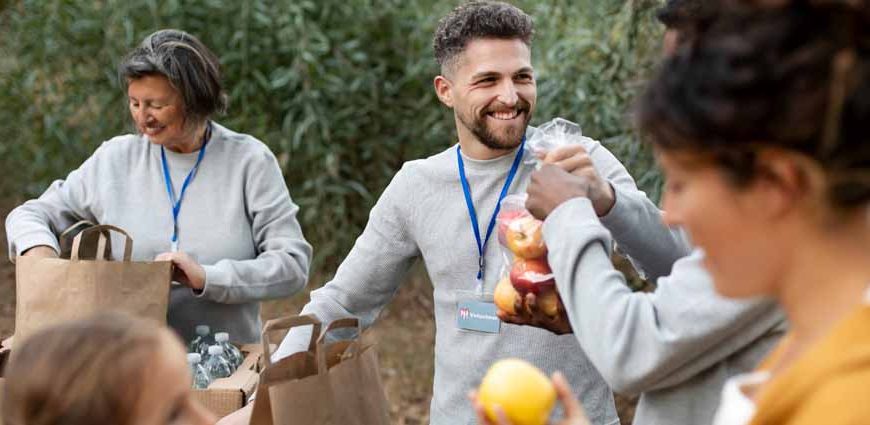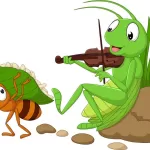“The concept of social awareness is fairly simple; it’s a person’s ability to consider the perspectives of other individuals, groups, or communities, and apply that understanding to interactions with them.”
– Positive Action
Fostering Social Awareness- About Community Helpers for Preschoolers
A child’s mind is like a sponge in the early years of life, eagerly soaking up knowledge about the environment. We have a special chance to educate preschoolers about the idea of community volunteers and the essential roles they play in society during these crucial developmental years. We can encourage social awareness, empathy, and respect in our young ones by teaching them to appreciate and value community assistance from an early age. Moreover, introducing community helpers for kids will build their social skills and enhance their understanding about social work. In this blog, we will examine the who, what, and why of community volunteers and offer interesting suggestions for incorporating these principles into your preschool curriculum.
Who are Community Helpers?
Community volunteers are the hidden heroes who dedicate their lives to making our neighbourhoods safer, healthier, and more alive. They are people from a variety of occupations who give their time and talents to help others. Doctors, nurses, police officers, firefighters, teachers, postal workers, librarians, and many more professions are represented among the volunteers. They act as pillars of stability and substantially contribute to society’s well-being. Moreover, exposure to these community helpers for kids sparks their interest to contribute positively to the society.
Fact: Learning about community helpers list children can help them choose a role model to contribute to the society in a beneficial manner.
Importance of Community Helpers for Kids
It is essential to teach toddlers about community volunteers for a number of reasons. First off, it aids kids in creating a feeling of identification and belonging in their local community. Children can realise that they, too, can contribute to improving their community by studying the functions of various community helpers. Second, it fosters compassion and social consciousness. Understanding the difficulties and duties faced by volunteers in the community fosters empathy and respect for individuals who devote their lives to serving others. Last, but not least, it exposes kids to a variety of job alternatives, enabling them to investigate prospective interests and goals at a young age.
“No matter the person’s age, when someone is working hard at serving others, they think less about their wants and needs and more about the wants and needs of others. It’s not common for kids to realise that some people don’t have food or that some kids don’t have money for school supplies. So one of the benefits of community service is that it opens their eyes to how others live.”
– Grace Clausing
Engaging Ideas for Teaching about Community Helpers
- Field Trips
- Guest Speakers
- Role Play and Dress-Up
- Art and Craft
- Storytime
- Community Helper Days
Field trips are one of the ways to show the importance of community helpers for children. Visits to different community facilities, including fire stations, police stations, hospitals, post offices, and libraries, should be planned. These outings provide kids with practical experiences and give them a chance to meet and talk to local volunteers. Encourage kids to learn about their duties and ask questions.
Introducing kids to guest speakers is a great way to inculcate the importance of community helpers to kids. Invite volunteers from the neighbourhood to the preschool so they may share their experiences. Talking about safety can be done by police officers, firefighters, or paramedics, while talking about health and well-being can be done by physicians or nurses. Encourage interactive sessions where kids may ask questions, try on uniforms, and/or touch tools.
Role play and dress-up is an interesting way to introduce community helpers for kindergarten kids. Create a space for dramatic play where kids may role-play while dressing up like community members. Give them clothes and props to promote storytelling and pique their creativity. Thanks to this practical approach, children may put themselves in the roles of community workers, which helps them comprehend their duties better.
Did you know that community helpers’ importance is crucial for kids to develop a grateful attitude?
Engage kids in imaginative pursuits related to neighbourhood assistance to introduce the subject of community helpers for kindergarten kids. They can build police badges, doctor’s jackets, and firefighter caps from construction paper and old white shirts. These tasks encourage creativity and fine motor abilities while reinforcing what has been learned.
Read novels and tales that describe the functions and value of volunteers in the community. Pick novels for your child’s age that have relatable characters and circumstances. Encourage conversations about the narrative by encouraging kids to consider how the neighbourhood helper assisted others or fixed issues. Therefore, story time is one of the interesting ways to create awareness of community helpers for preschool children.
Community helper days are one of the meaningful ways to engage community helpers for preschool kids. Plan themed days so kids can attend preschool dressed as their favourite volunteers in the neighbourhood. Engage in connected activities throughout the day, and invite kids to discuss why they appreciate that assistance. This practice encourages self-expression, creativity, and social engagement.
Introducing Your Kid to Community Helpers
What exactly does it entail to help? There are many wonderful methods for kids to practise being helpful, from placing toys once again on the shelf to gathering food for needy neighbours. Helpfulness is a crucial component of healthy social development and creates awareness of community helpers’ importance. Children can also be introduced to numerous adults who strive to improve the lives of others to impart community helpers’ importance.
With our upcoming lesson subject of “Community Helpers,” Little Sunshine’s Playhouse & Preschool performs precisely that during the month of September. For kids, understanding community helpers importance has a variety of advantages; three advantages are mentioned below:
- Teaches youngsters how to inquire for aid and, more crucially, who to ask, which promotes safety.
- Stimulates curiosity about potential occupations. Children learn about a variety of intriguing vocations when they interact with the individuals who make our towns safe, orderly, and clean.
- Promote an interest in one’s own neighbourhood. We can support our community helpers by driving carefully, not littering, and engaging in other positive behaviours.
Who Are Community Helpers? 10 Community Helpers Your Kids Need to Know About
There are volunteers in every community! We encounter devoted women and men who make our lives simpler every day all across our communities, whether they are at home, at work, at school, at the library, or the store.
- Teachers and librarians are those who assist us in discovering fascinating new information.
- Police officers, firefighters, and emergency personnel are those who help in keeping us safe.
- Our cuisine is produced by farmers, chefs, and cooks.
- Doctors, dentists, and nurses assist us in maintaining our health.
- Custodians, trash and recycling collectors are some of the people that keep our neighbourhoods clean.
- Those that assist us on the road include road workers, crossing guards, snowplough operators, and transport operators.
- Who assists us at home: Our houses are built by construction workers, utility personnel, plumbers who do repairs, and delivery personnel who deliver us mail and parcels.
- Animal carers include veterinarians and game wardens.
Recognizing Community Helpers – 3 Simple Ways
It is simple to inform your kid about Community Helpers during your everyday routine because we encounter them in so many different settings.
- Point out the many occupations that individuals are performing in public. When you take your youngster shopping, please point out the store employees who assist us in choosing and paying for the items we purchase. If there’s a security guard on the job, describe how we should approach them if we run into trouble, such as becoming lost.
- Recognise some of our Helpers’ uniforms. Clothesline Clues to the Jobs People Do, a vibrant picture book, exposes kids to several of our Community Helpers’ unique outfits. A chef’s apron or a delivery person’s attire are two examples.
- Describe the automobiles some Community Helpers drive. Many people drive unique automobiles as a result of their occupations. These include buses, other transit vehicles, ambulances, fire engines, delivery trucks, and police and ambulance cars. Your youngster will learn to recognise Community Helper cars from the many great books about them.
Interacting with Community Helpers – 5 Different Ways
How to communicate with community helpers should be discussed with your child. Many are reliable grownups who can look after your youngster when Dad and Mom are away. This can be facilitated through storybooks, doll role-playing, and other age-appropriate activities.
- Teach your kids who to contact if lost in a crowded area. Some examples include a security guard in uniform, a retail clerk, or a receptionist in an office or hotel complex.
- Ensure that your youngster learns your full name in addition to “Mom” or “Dad.” It will be simpler to message you to come to look for them if you and your child become separated.
- Teach your kid how to call for assistance in a crisis, such as a serious injury or a fire, once they are grown up enough to be able to use a phone. Discuss the inquiries a dispatcher could have as well as how to respond to them.
- Help your kid develop the ability to express how they feel to the doctor.
- Allow your youngster to practise asking for assistance in locating what they’re seeking when exploring a library or store.
Conclusion
Establishing a strong basis for social awareness, empathy, and gratitude for individuals who serve their communities among preschoolers by teaching them about community volunteers and occupations. We may foster a profound awareness of the priceless contributions provided by community helpers by combining engaging activities like field excursions, guest speakers, role-playing, art, and storytelling. These encounters broaden kids’ understanding and encourage them to dream large and think about their contributions to a better future. Introducing them to the community helpers list also instils values of service in children. To foster our children’s curiosity and create a community that honours and respects its unsung heroes, let’s work together as educators, parents, and other carers.
Which of these activities are you going to engage your children with to learn about community helpers?
For informative and accurate articles on all things related to your new born-toddler’s development, growth, health and nutrition, follow EuroKids Blogs and do check out our nationally recognized preschools – EuroKids for the first step in your kid’s educational journey!
















